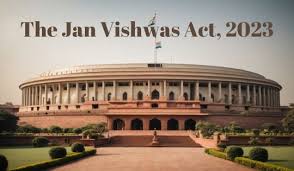Written by: Rishab Katiyar, Intern
Introduction
The frequency of copyright infringement claims in the various dimensions of the industry have been rising gradually ever since the dawn of fair dealing doctrine. It is an exception in the copyright law which is founded on the principle of disseminating creations. Fair dealing is the advanced/custom version of fair use that developed in American Courts of various circuits and Article 13 of the TRIPS Agreement.
In India, fair dealing stems from Section 52 of the Copyright Act, 1959 and has seen a set of amendments until the very recent one in 2012. Fair dealing encompasses the scenarios in which reproduction of the work can be permitted adhering to standards/tests affirmed in the provisions. Indian judges have time and again interpreted such works and attempted to decipher the ambit of fair dealing.
The presently evolved jurisprudence of fair dealing in India is conservative and inconsistent, these hurdles disable a standard mechanism of copyright claims for parodies. Lack of predictability in such claims backlashes the creators due to the fear of crossing the line of fair dealing, this also encroaches their freedom of expression.
The ambit of Fair Dealing Doctrine
Inclusion of ‘fair dealing’ under section 52 of the Copyright Act has open the flood gates for manifestations of creativity like parodies, remixes, biographies, character merchandising, etc. It allows certain copyrighted works to be reproduced by other person in their own manner but not leading to plagiarism or derogation.
The doctrine of fair dealing has originated as an equitable doctrine being ‘fair’ to those copyright proponents who have compared copyright with patent and termed it to be a non-absolute right. It is an exception to law which would otherwise be strict enough to stifle the creativity out of the work. Fair dealing doctrine has been evaluated in the Indian Courts based on two main factors,
- Substantiality of the copied work: The issue of substantiality has two different concerns. First, substantial copying of the copyrighted work is necessary for it to be copyright infringement. Second, once there is a prime facie infringement, whether a use is fair is partly determined by the substantiality of the copying as one of the factors. Therefore, the use must be substantial enough to render an infringement for fair dealing to apply but also it cannot be too substantial for the use to be proved fair.
- Commercial aspect of the recreated work as the labour of the creator can not be used for profit making to someone else. The market of the original work must not be affected negatively.
The jurisprudence of the doctrine has been evolved after witnessing a plethora of cases across various forms of entertainment.
- How does copyright apply to cinematographic films?
With respect to Cinematographic Films, the acts that would not amount to infringement has been given under subsection (i) of section 52 of the Copyright Act. Section 52 (1)(a) was earlier restricted to artistic, literary, musical, and dramatic works. However, after the Copyright (Amendment) Act, 2012, this provision has been extended to all the works.
Cinematographic films and sound recordings are now brought under the ambit of this section. The defence of fair dealing is allowed by the court if the counter drama is just a parody of the original drama for critiquing the ideas portrayed in the original drama.The courts have observed that any commentary or critique must enquire three things, (1) Quantum and value of the matter taken in relation to the comment or criticism (2) The purpose for which it was taken (3) The likelihood of the competition between the two. - Are the characters of the movies/books also protected under copyright laws?
Yes. Let us understand this with the help of a few case laws. In the case of Arbaaz Khan v. NorthStar Entertainment Private Limited, the famous character, ‘Chulbul Pandey’ from the movie ‘Dabangg’ was recreated by the defendants in an animated series. The character created had very different characteristics than the original character so while weighing the substantiality aspect declined the infringement claim. Amidst these how can the movie of all times, ‘Sholay’ which gave us Jai-Veeru ke dosti, Radha ke Dhanno, and Gabbar Singh not be in clutches of the debate between parody and infringement. In Sholay’s case, Director Ram Gopal Verma used similar characters as that of ‘Sholay’ and the court observed that his movie made an impression as that of remake of ‘Sholay’ leading to a fine of Rs. 10 lakhs. - What about the remixes that keep coming time and again?
The exception of fair dealing in a recreation of music mandates the singer to take prior consent of the original creator. This was observed in the case of Super Cassette Industries Ltd v Bathla Cassette Industries Pvt, Ltd. as the voice is the soul and essence of the song therefore if the singer is changed and if any change is done without taking consent or informing the original singer, it would not be covered under the protection of doctrine of fair dealing. In the recent case of ‘Genda Phool’ staring Jacqueline Fernandez and sung by Badshah has been charged with plagiarism by Ratan Kahar for using Bengal’s famous folk song ‘Boro Loker Biti Lo’ written by him.
He neither gets royalty nor has financial support for legal battles owing to which his creation has been used without consent or credit more than once since 1976. The new song, however, along with plagiarizing has also altered the meaning of song, demeaning the famous folklore. For invoking the exception of fair dealing, the work shall not be of commercial nature, which is violated by the singer Badshah.
Conclusion
Let us consider a situation where no rights of fair dealings are available. Such a scenario will completely eliminate certain genres of entertainment industry like remixes of music, remake of movies, parodies, memes and even merchandising. There can also be a situation where absolute rights are provided to the creators. In such a case, the creators work might not travel as far it does by the various versions of the work created by other people. It would not incentivize morally and economically to the re creators and this might result to decline in creativity. To balance out these both scenarios, fair dealing jurisprudence gives certain rights to people so that novel work are given adequate protections and entertainment is also assured.
Refrences
- Ayush Sharma, Indian Perspective of Fair Dealing under Copyright Law: Lex Lata or Lex Ferenda?, 14 JIPR, 523-531 (2009)
- Zakir Thomas, Overview of Changes to the Indian Copyright Law, 17 JIPR, 324-334 (2012)
- Association of Independent Video and Filmmakers, Documentary Filmmakers’ Statement of Best Practices in Fair Use, AUSOC 1,2 (2005), https://cmsimpact.org/wp-content/uploads/2016/01/Documentary-Filmmakers.pdf.
- Ayush Sharma, Indian Perspective of Fair Dealing under Copyright Law: Lex Lata or Lex Ferenda?,14 JIPR, 523-531 (2009).





